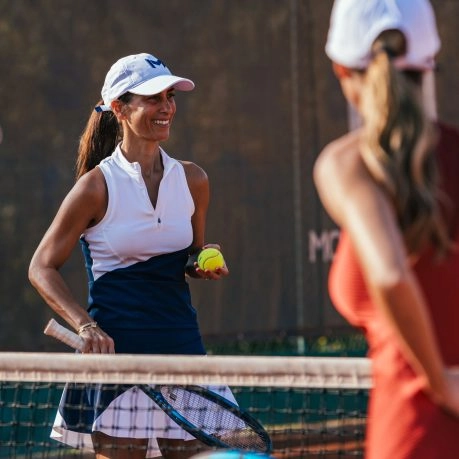Waiting too long to prepare
One of the most common mistakes is to delay preparation:
- Mistake: Waiting until the ball is too close before starting to turn your shoulders and prepare the racket.
- Solution: Be proactive. As soon as you recognise that the ball is coming onto your backhand, start preparing immediately.
Lacking fluidity of movement
Another common mistake is a lack of fluidity when hitting the ball:
- Error: Jerky movements or a racket that stops just after impact reduce the power of the shot.
- Solution: Concentrate on the follow-through and make sure your racket continues to move after impact.
Poor use of the lower body
The one-handed backhand isn’t just about the arm. The lower body is just as important:
- Mistake: Hitting the ball without using your legs to transfer the weight.
- Solution: Practice exercises that help you transfer your weight correctly from one leg to the other to generate more power.





















